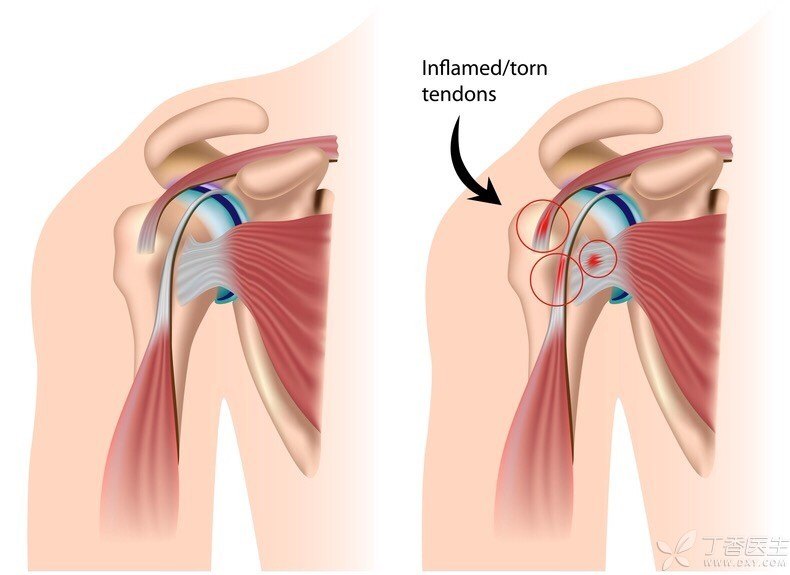游泳从第一届奥运会(1896 年)就列入奥运会正式项目.
There are four swimming styles in the Olympic Games, including freestyle, breaststroke, butterfly, backstroke, medley, relay (freestyle and medley) and 10km in open waters. A total of 950 swimmers will take part in the Rio Olympics and 34 gold medals will be won.
I don’t know if you have found out that although there are more people participating in the competition, we seldom see on the news about swimmers suffering from serious injuries.
But is this really the case? From the perspective of sports medicine, I will tell you about this issue today.
Is swimming really less vulnerable?
Swimming has always been regarded as the sport that causes the least injuries. Compared with resistant sports such as basketball, equestrian and football, swimming does rarely cause serious sports injuries.
In the past large-scale competitions, there were few accidents in swimming events. But there were also very shocking incidents.
For example, on March 21, 2007, Zhou Yanchun, a 17-year-old national first-class athlete, drowned while training in the swimming pool in Hongkou District of Shanghai. The specific cause of drowning is not clear.
Another example is Luo Xuejuan, a Chinese swimmer, who fainted twice in the Athens Olympics in August 2004 and was unable to support himself ashore. On January 29, 2007, Luo Xuejuan, who was only 23 years old, officially announced his retirement due to illness.

This kind of thing also happens occasionally.
So far, there is no direct evidence that swimming is prone to heart disease. Moreover, compared with other sports, the proportion of swimmers suffering from heart disease is very low. However, this may suggest that people with heart diseases should swim carefully and finally consult a professional cardiologist.
A must-know [swimming injury]
Compared with other sports, such as football, basketball and other confrontational sports, accidental injuries occur from time to time on the field, and accidental injuries caused by swimming on the field are very low.
But swimming is the exercise that uses the shoulder joint most frequently. Repeated stroke in daily training is an important factor causing shoulder joint pain, At each stroke cycle, The arm needs to complete the movements of entering the water, stretching the arm, paddling, exiting the water and moving the arm in the air. Repeated actions lead to fatigue of rotator cuff muscle group and scapular stabilizing muscle group, which makes scapula lose stability, increases the possibility of humeral head displacement, and may cause subluxation or even complete dislocation of shoulder joint. Soft tissue around shoulder joint is under excessive pressure, resulting in inflammation and pain of shoulder joint.
The most common training-related injury is [swimming shoulder], which is medically known as [subacromial impingement syndrome].
Some people also refer to subacromial impingement syndrome caused by swimming, glenoid lip structure injury of shoulder joint and related shoulder joint dysfunction as [swimming shoulder].
Some swimmers suffer from shoulder joint pain after swimming. Some cause pain when shoulder abduction, some cause pain when shoulder abduction is 90 degrees, some cause pain when shoulder abduction is 90 degrees, some cause pain when shoulder joint is adduction, and some cause pain when shoulder flexion is forward.
Some patients are accompanied by rattling or stiffness in addition to pain when lifting or rotating their shoulders, and even some patients will feel unstable in the shoulder joint at specific positions, resulting in limited function of the shoulder joint. In serious cases, sleep will be affected, and even chopsticks cannot be held.
Shoulder impingement syndrome is divided into three phases:
| 1 期: 急性炎症, 水肿和出血, 伴有肌腱炎或滑囊炎, 非手术治疗可恢复 |
| 2 期: 慢性炎症, 纤维化或肌腱炎, 反复疼痛, 手术治疗 |
| 3 期: 肩袖完全断裂, 渐进性功能丧失, 前部肩峰成形术, 肩袖修补 |
Source: Neer CS II: Impact leons, Clin Orthop 173: 70, 1983

Shoulder injuries are usually found earlier, The earlier the treatment, The better the effect. Therefore, if friends who like swimming have shoulder joint discomfort, Should see a doctor in time, can go to joint surgery, sports medicine department or sports rehabilitation department to see a doctor. Do not find shoulder pain and discomfort, hold the idea of [endure a endure is good] or long-term oral painkillers (such as fortalin, etc.), continue to force exercise, which often can only aggravate the disease, and may lead to serious consequences of rotator cuff tear or joint dislocation.
Some Suggestions on Preventing Shoulder Discomfort in Swimming
(1) Make sufficient preparations to warm up before and after swimming, especially the shoulder, hip and knee joints;
(2) Pay attention to maintaining correct swimming skills, and can consult a professional swimming coach;
(3) Avoid actions that cause pain, reduce the amount of training and take timely treatment measures when pain occurs;
(4) Pay attention to pulling the anterior and posterior joint capsules of shoulder joint after swimming.
As long as the method is proper, swimming is indeed a recommended sport, which can be used as both a fitness and a survival skill.
It is most suitable for middle-aged and elderly people with knee joint problems.
Compared with basketball, running, cycling, mountaineering and other sports, swimming has little influence on ankles and knees.
Taking swimming as a long-term and regular sport has more advantages than disadvantages. However, remember that you must keep the frequency 2-3 times a week, and each swimming time should be more than 40 minutes, excluding bathing and chatting time!
When swimming, the resistance of the water makes the muscles exert moderate force. These characteristics are very suitable for the exercise of the middle-aged and the elderly. It is not easy to have accidents due to too much exercise. However, it must be a friend who does not have serious diseases such as heart disease and hypertension.
In addition, long-term swimming can improve muscle strength, speed, endurance and joint flexibility.
It is best to learn swimming in what?
If you look at Olympic swimming, you will surely envy the swimmers for their round, slender, properly proportioned muscles and strong bodies.
Adolescence is the peak stage of musculoskeletal development. Swimming training at this time can well shape a perfect figure, and can maintain balanced bone development on both sides of the body, straight spine, wide shoulders and narrow buttocks, and developed upper limb strength.
At present, many provincial teams recruit members around the age of 13. It is appropriate for most people to start practicing at the age of 13. Children aged six or seven have a playful mentality and are not suitable for forced training.
Of course, as a survival skill, it is not too late for anyone to learn it at any time.
